This morning, I’m Musing Over Things.
Actually, I’ve been musing over Things for the past many weeks. But this morning, I’m developing detailed lists from my musings on Things.
I want to fill out my Topic Lists with some more relevant, useful needlework topics – topics that you find relevant and useful. So I’m going to propose a question to you, and I hope you can take a little time to answer it.
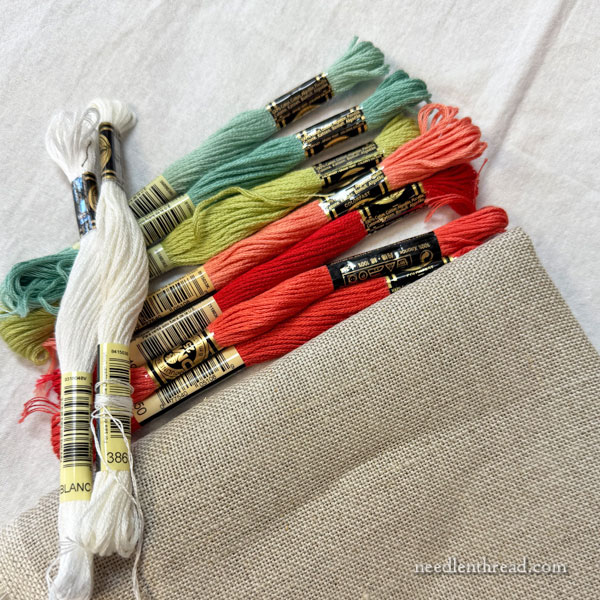
Before we delve into the question, though, I thought I’d mention what’s on the table here at work. Since it’s Friday and we’re halfway through January, it seems appropriate to show you something related to actual stitching!
This piece of linen and these colors are on the work table. I’ll probably extend the colors a little, tweak the palette slightly, maybe add some embellishment ideas, before something actually begins to develop with this, but I have this idea in the works, and I like these colors for it.
Imagine it with just a touch of gold, too. The tiniest touch.
What do you reckon? Good colors? Should they be extended? Any recommended additions? Subtractions? Substitutions?
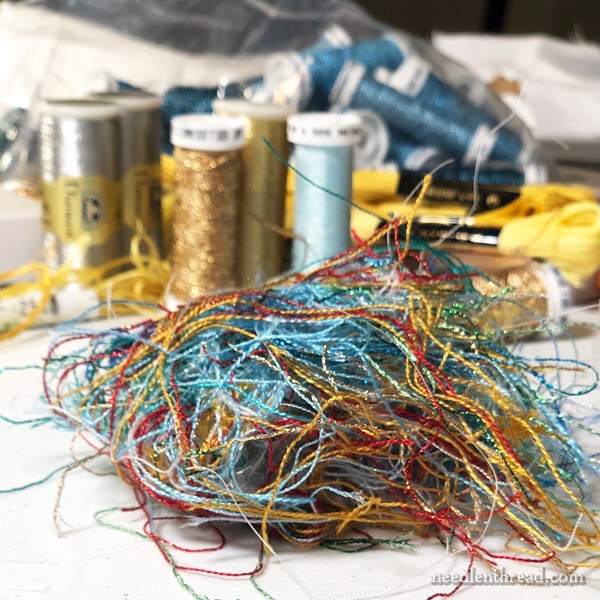
What’s Your Problem?
This is my big question for you: What causes you frustration when stitching? What really tangles your thread, crumbles your cookie, sinks your ship, topples your tower when you’re in the midst of a stitching project?
Do you have a particular stitching difficulty that needs troubleshooting?
Is there any aspect of your embroidery that has prompted you to proclaim “is there a better way” or “surely this can’t be that complicated” or “how do people make this look so easy” or “why does this always happen to my stitching”?
Is there any particular difficulty or challenge that turns you off from embroidery – that could be a barrier to your picking up a needle again?
I would love to hear about your pet stitching frustration, obstacle, or challenge – something that you’d like to troubleshoot, that you’d like to learn how to overcome – problems that you’d like solved (or at least mitigated). Or perhaps just general stitching difficulties that you’d like to see discussed.
Over the years, I’ve enjoyed troubleshooting needlework problems and writing about it, and I’d like to develop a few more helpful articles this year that can help make us all better stitchers.
So that’s my plan, and you can help me! Leave a comment below or drop me an email and tell me about any current stitching problem or challenge that has you befuddled.



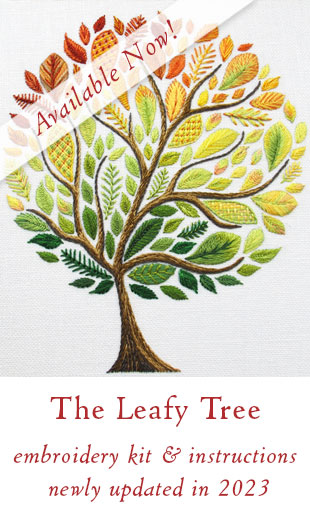
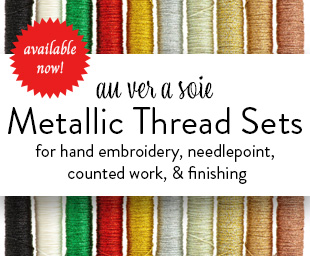
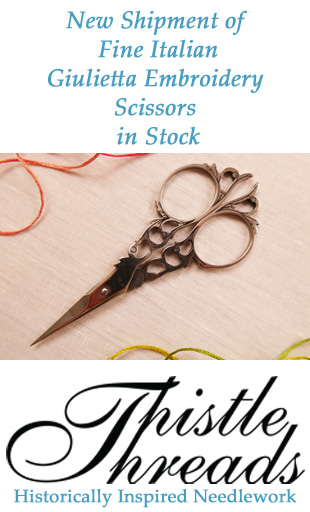

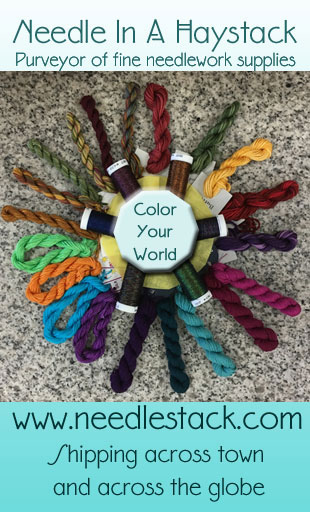
My biggest problem is close vision. Eye surgeon made mistake and now I have no close vision. I’ve tried multiple solutions including a pair of craftoptics specs that were awesome 5 years ago but no longer adjust enuf for Mr to dohandwork. Any brilliant ideas. I’ve tried about 8 sure fire solutions that don’t help me see.
Donna, did you go back to CraftOptics with a new prescription? They can adjust the prescription on the glasses that came with the CraftOptics to help with changes in your eyesight, without having to purchase new CraftOptics.
Another option is to talk at length with your optometrist about what you want to be able to see. My optometrist had me take measurements over a period of time, to determine exactly my most comfortable working distance, and then he gave me a prescription for single-duty lenses – like personal prescription magnifiers that are a fixed distance for handwork and for computer work. My work glasses are full lens (not progressives or bifocals) that I take off and on when I’m working. It is kind of a pain in the neck to have to switch glasses, but it does make it much more comfortable to see well enough to stitch, and it works well for me for extended periods of stitching time. I highly recommend speaking at length with your optometrist to see if single-duty glasses would work for you, that you can use just for handwork.
I used to be very near sighted. I could take off my glasses and hold my work close, and that always gave me the best vision for stitching. I got used to working within 6-8″ of my fabric, and I adjusted my stands and so forth accordingly so that I didn’t have neck or back problems from bending close to the work. But I had to have cataract surgery and the new lenses that were implanted were not what I wanted. They allowed for a kind of combined mid-distance vision, with one eye’s focal distance being much closer than the other’s, and it really destroyed how I was used to stitching. I didn’t ask the right questions at the time of choosing the lenses, I guess. So I know where you’re coming from! So far, single-task glasses have been my best option. I did use Craft Optics for a while, but I had an ocular occlusion in the lower right quadrant of my left eye, leaving a large blind spot that doesn’t work with the “jeweler’s loupe” type of lens, so the Craft Optics just won’t work for me anymore.
I love all the colors of metallic thread, lights thread that type of thing but when I try to use them they just fall apart or are completely unmanageable! I want to be able to use them in some projects, but I always end up putting them back in the bag from whence they came. I would love a video, or photo explanation or just some tips – whatever you have time for………and if this is a problem for anyone else.
I think this a great idea, especially for those of us who are still struggling with just about everything . Thanks much.
Carol
Hi, Carol – What brand of metallics do you use? I highly recommend Au Ver a Soie metallic threads and braids. They are much much much easier to stitch with than any other metallic on the market.
What drives me crazy is transferring a pattern, in particular getting a very fine line pattern on to silk cloth or a more textured cloth. I have tried several methods which were disappointing. I would like to try the pounce method but the idea of putting black carbon on silk is mind boggling. And is there a better way to secure the outline other than using watercolors? No, I do not plan to wash my finished silk embroidery, but I live in the Pacific Northwest and I wonder if the watercolor paints will bleed in our more humid environment.
Really liked the article about how yo choose a color scheme!!
This isn’t really a “problem” per se, but a situation where I’m looking for a better way. When ending the last thread in an isolated section of satin stitch (where there’s nowhere nearby to hide small anchor stitches), how do you secure your thread? The back of satin stitch is too loose to hold the end using the standard method of pulling the end through a few stitches. I always tease the long backs of the satin stitches apart and take a little “bite” out of the back of my work with my needle, then take a small backstitch over it again to secure it. I don’t love this method, though, because I’m afraid it strains the satin stitch when I part it like that, and, well, it’s just a bit of a pain! Is there a better way?
That’s how I do it, too, Emily.